Welcome to the 35 who have entered The Physicality since the last issue. If you aren’t subscribed, join the 370 others who care about the real world here:
This week’s Physicality is brought to you by my good friends at Thursday Labs.
Content is my full-time job. Yet, I struggle with making all the tweets, LinkedIn posts, and videos needed to make The Physicality a success. It is just exhausting. That’s why I’m glad Thursday Labs exists.
Made for B2B founders, Thursday builds your ‘autopilot’ content engine. They produce your podcast, video series, newsletter, blog, and daily short-form video clips to create 700+ pieces of content in 3 months across 15+ channels. One client had a staggering 3.5M impressions in 90 days. That’s days of work off your plate and millions of eyes on you. They are literally swimming in clients right now so if you’re interested, respond to this post and I’ll intro you.
This Burger Chain is an Animal
READER WARNING: This piece will make you disastrously hungry. Strongly recommend you begin this with food (a burger) in hand.
Anthony Bourdain bestowed this sub $5 burger joint the rank of his favorite restaurant in LA.
Paris Hilton got a DUI because “I was just really hungry, and I wanted to have In-N-Out.”
This restaurant’s numbers are so tantalizing that Warren Buffett tried to invest but the company never got back to him. Take a look. This seemingly straightforward burger chain literally makes cash out of cows. According to Forbes in 2018,
“An In-N-Out store outsells a typical McDonald’s nearly twice over, bringing in an estimated $4.5 million in gross annual sales versus McDonald’s $2.6 million.
In-N-Out’s profit margin is an estimated 20%. That’s higher than Shake Shack (16%) and other restaurant chains that own their locations, like Chipotle (10.5%).
Revenue should surpass $1 billion this year, roughly doubling in eight years, and the business is debt-free.
In-N-Out is conservatively worth $3 billion.”
Not only is it bringing in the bacon, it is more frequently visited than any other fast food joint. According to Placer.ai, it averaged ~700,000 visits/store in 2022, ~4x the industry average.
They do all this while breaking every fast food rule. They,
Use the highest-quality ingredients
Charge low prices that don’t even keep up with inflation
Keep a tight menu while competitors’ menus balloon year over year
Only open a new store only when they can pay for it in cash
Refuse to take outside capital or go public
Something isn’t right. How can this chain bring in more revenue per store than McDonald’s, have profit margins twice that of Shake Shack AND keep its prices low while still offering high-quality ingredients?! The math isn’t mathing. We call this a NARRATIVE VIOLATION.
Let’s understand what’s going on the grill.
Today’s Menu
History and Facts
The In-N-Out Recipe:
Beef: Simple Menu with Quality Ingredients
Cheese: Strong Relationship with Vendors
Bun: Highly-Aligned Employees
Spread: Measured Growth
Onions: Consistent Store Design
Double-Double on Family Values
History and Facts:
Harry Snyder began In-N-Out in 1948 after coming across a type of restaurant he had never seen before. As Lyndsi Snyder, his granddaughter and current In-N-Out CEO, writes in her new book, The Ins-N-Outs of In-N-Out Burger,
“Americans were growing increasingly mobile. Gas was cheap. Harry imagined a new restaurant that would offer fast but quality meals for people on the go. He’d seen a restaurant where cars drove right up to a window… he believed he could be successful with a similar restaurant where customers could go ‘in and out.’”
The first location was strategically placed in Baldwin Park, CA., twenty miles from downtown LA. Harry saw that Los Angeles was on the rise, growing outward with the influx of World War II veterans starting families. This meant car-dependent suburbs like Baldwin Park “...lay right in the path of opportunity” (Snyder). A drive-thru was the perfect restaurant to start.
They sold 57 burgers on their first day and 2000 by the end of the first month. Hamburgers were 25 cents and cheeseburgers were 30. After expanding to a handful of locations, the team no longer could keep up with yelling orders to and from the cars. So, In-N-Out invented the first-ever two-way speaker drive-thru. This single piece of technology changed the landscape of food forever.
The In-N-Out Recipe
So how did this single burger joint go from $600/month/store to $4.5M/year/store? The through line between In-N-Out locations 1 to 391 is “consistency.” Tom Evans, In-N-Out’s first employee, summed it up well:
“The DNA of In-N-Out is made up of small improvements and a simple menu where quality, the customer, friendliness, and cleanliness have always been important.”
As we’ll see, each ingredient is powerful on its own but it’s the combination of flavors and letting those flavors marinate that really packs the punch.
Simple Menu with Quality Ingredients
Fast food is a unit-economics business. Every fraction of a cent matters. That’s why it makes sense to keep the menu tight. In-N-Out only serves two main items: burgers and fries with 16 items on their menu in total. For comparison, McDonald's has 145.
The benefits of this simplicity are multifold:
Consistency: When you come to In-N-Out, there are no surprises. You know your order. If you’re feeling adventurous, you can get something off their not-so-secret menu that uses the same ingredients. They don’t want customers to feel like their favorite item is ever at risk of leaving.
Minimize Cost: Not only is the menu comfortingly consistent, but it also allows In-N-Out to minimize costs and take advantage of scale economies. They only have to buy a few things from select vendors and buy a lot of it. Forbes reports that by owning sourcing and distribution, In-N-Out likely saves 3-5% in food costs a year.
Quality: By only handling a certain number of ingredients, they can spend time doubling down on quality control and making improvements to bring out the best in just a few things. Nothing is frozen, prepackaged, or reheated. They spend top dollar for top ingredients. A few standouts:
Beef: “The front quarter chuck was an expensive cut of meat, but Harry was willing to spend more to get the highest quality available. His rationale was ‘People will try out a new restaurant once, but they will only come back for quality.’”
Bun: Although this process is slower, requires more equipment, and costs more, “buns are old-fashioned sponge and dough, and they all use granulated sugar to attain a properly toasted bun.”
Even more recently, they replaced a mold inhibitor from their buns with natural enzymes, Yellow 5 with turmeric, and corn syrup with sugar.
They maintain this level of food quality by ensuring that each location is a reasonable driving distance from a central warehouse, called a hub. This is one of the reasons why they largely have hugged the West Coast for most of its life.
Strong Relationship with Vendors
In-N-Out developed a culture of respect, transparency, and yes, CONSISTENCY, with its partners. As with nearly every aspect of the company, this began with how Harry and Esther ran the business,
“[Esther] developed a reputation for paying every bill upon receipt and mailing it out that night, believing that paying promptly showed respect to the vendors. Those suppliers, in turn, took care of In-N-Out.”
Beyond the pure business benefits of establishing trust with vendors, this trust came to reward them during a time of crisis. In 1978, In-N-Out’s headquarters blew up. It turns out that a mixture of a space heater and hundreds of gallons of cooking oil don’t mix.
“The blaze ravaged the warehouse. The meat department was gutted… and the hub for product storage. Everything was destroyed. Rich [the CEO at the time] vowed to keep every store open. He didn’t want anybody to lose their job. He wanted to ensure that customers could still be served. Vendors rallied to help. Supplies were delivered and vendors went the extra mile to make sure our stores received exactly what they needed. We didn’t miss a beat” (Snyder).
This multi-decade relationship with suppliers was so strong that the company was back to serving customers the very next day.
On the flip side, when you mess with In-N-Out, they won’t stick around. For nearly 50 years, In-N-Out served mainly Pepsi products.
“We believed we had a strong relationship. We held an agreement that the two companies wouldn’t compete in any way” (Snyder).
All was simpatico until Pepsi started buying fast-food restaurants: Pizza Hut in 77’, Taco Bell in 78’, and KFC in 86’. In 1990, Taco Bell bought Hot ‘n Now, a burger chain. Rich voiced his concerns to Pepsi, who assured Rich that they were just “testing the market” and wouldn’t open any stores near In-N-Out.
But then Hot ‘n Now opened locations in Fresno, CA, and Irvine, CA. In-N-Out switched to Coke products immediately. They are consistent with their partners so they expect consistency in return. Their business is predicated on passing that regularity along to the customer. They’ll move on if you can’t offer that as a partner.
Highly-Aligned Employees
You could argue that In-N-Out would still be the beefy behemoth it is today even if it charged a bit more and used fewer quality ingredients. Those are secondary to their real secret ingredient, their employees (called associates). Harry Snyder ran his stores akin to a military operation. Every detail was thought and re-thought-through. If Harry was the general, his associates were fine-tuned special forces.
Associates always had to have a genuine smile on their faces. They could never appear idle. Everything from the kitchen sink to the furthest parking spot was to be spotless. Each associate's uniform was to be pristine. Food, of course, was to be the same, every time. While we’ll highlight plenty of reasons why In-N-Out is a great employer, the most consistent negative Glassdoor review is that “managers make you feel like crap until you don’t mess up anymore.” The expectation of success remains constant 75 years later and is in contrast to most of the fast food industry today.
In-N-Out is not an easy place to work. That’s by design.
“Harry wanted to ensure his exacting standards would be replicated… he wanted customers visiting Store Number 2 to receive the same [treatment] whether he was present or not. He expected every helper to work hard and maintain a winning attitude. In exchange, he paid well and taught them everything he knew” (Snyder).
Harry understood he was going to be asking a lot of his employees so he only wanted the best. He trained, developed, and compensated them to ensure that his orders would be carried out to the letter.
Despite the hard conditions, long hours, and high standards, the company has garnered tremendous employee loyalty. There are a handful of employees who have been with them for 50 of In-N-Out’s 75 years. Employee treatment is paramount to their winning strategy. Lynsi writes,
“If you truly want to be a company to be all it can be, start by treating your employees right. Offering the highest wages in the industry is one way we attract the best people to care for our customers.”
And that isn’t empty corporate speak. Here are some greasy details that back it up:
In 2023, the average store manager earns $180,000+/year, which includes profit sharing.
In 2018, the average In-N-Out manager has been with the company for 17 years and makes more than the typical California dentist, accountant, or financial advisor (Forbes).
Employee benefits include health insurance, vacation days, profit sharing, and retirement plans.
Along with the money, the comprehensive development plan keeps associates growing professionally decade after decade.
“Every associate who works in or leads our stores was hired at the entry level, then worked their way up. We deliberately champion a slow-growth philosophy. Long ago we decided to grow only as fast as we can develop quality leaders.”
Each store-level associate goes through a mandatory one-to-two-year training regimen to master everything from how to greet customers to cutting lettuce. Each new responsibility comes with more pay. Only in the very last step are you allowed to cook the burgers. They treat this role with reverence.
“Sometimes people will talk about “going to flip burgers,” like that’s a job they’ll do if everything else doesn’t work out. At In-N-Out flipping burgers is a really big achievement. When you flip burgers at In-N-Out, you’re in the captain’s chair” (Snyder).
After time in a store, they have created ongoing development programs for employees to rise to managerial levels.
They also seem to have so much fun. They regularly hold car shows, rock concerts, basketball tournaments, and company picnics. This gives employees another reason to stick around.
In-N-Out wouldn’t have nearly the same success without its highly skilled associates. This 75-year commitment to excellence is hard-fought and expensive but well-fed employees make for well-run companies.
Measured Growth
As discussed in the Wawa and Erewhon Physicality editions, there seems to be something about growing a business slowly that makes for a long-lasting company.
In-N-Out locations are paid for in cash. This began in its early days.
“Harry and Esther hated debt and they decided that only when they’d saved up enough money to pay cash for land and construction would they build a new store. Harry insisted that they never owe anyone anything – and he dreamed of expansion. But he didn't rush or expand quickly.”
Owning the real estate saves an estimated 6-10% that would be for rent. As mentioned before, they astonishingly carry no debt.
This constraint prevents them from growing zealously. In-N-Out positions its locations near a “hub” to maintain ingredient freshness. Once they saturate a market, they build a new hub and the cycle continues. They do plenty of analysis on where to grow, usually by highways and definitely outside of urban centers. As of 2018, they only had one location in downtown SF and LA each. This is in contrast to Shake Shack, McDonald’s, or pretty much any other fast food joint.
They don’t have aspirations to be everywhere. This way, the restaurant retains its aura of specialness. In an interview with Forbes, Lynsi reveals,
“I don’t see us in every state. I like that we’re sought after when someone’s coming into town. I like that we’re unique. You put us in every state and it takes away some of its luster”.
Measured growth keeps costs steady and customer interest high. It keeps company values, processes, and standards intact with scale.
Consistent Store Design
Look how lifeless McDonald’s locations are these days. No personality. Just millennial niceness. Boxes and rectangles everywhere. No color.
Now look at an average In-N-Out location.
Instead of trying to keep up with the times, In-N-Out plays into nostalgia. The color scheme and interior design haven’t changed since the 50s. As Forbes describes it,
“[Each] In-N-Out restaurant is a time capsule. The chrome tables and vinyl chairs are poodle-skirt-era throwbacks. [They are] determined to change the company as little as possible, particularly the brand’s image of 1950s wholesomeness.”
This consistency has the tactical benefit of keeping costs predictable for each store opening. They never have to hire a new interior design or architecture team. They just apply the same formula to a new location and watch the money pile up.
In-N-Out understands that the world changes every day. So it’s nice when some things don’t. While competitors are trying to constantly rebrand themselves, In-N-Out is winning by remaining in a moment in time.
Double-Double on Family Values
The secret to In-N-Out's success is consistency. But that consistency is only possible because of the Snyder family’s tremendous respect for Harry, his values, and his vision. Through multiple generations of leadership and tragedy, In-N-Out made all the same decisions as Harry would have.
After Harry passed away in 1976, the company was passed to his two sons, Rich and Guy. Rich, at 24, took up the mantle as President. The brothers agreed that they were going to grow the business with the same mindset that worked for their father.
“They didn’t want to sell the company or franchise the business. They were committed to excellence just as Harry had been. They believed in treating all associates well and paying them more than industry standards. They believed the customer always came first. [They] had learned the business by working and serving alongside their father” (Snyder).
With those values in mind, the company successfully expanded to nearly 100 locations and into new geographies under Rich’s leadership. At age 40, sadly, Rich died in a plane crash. The company found itself in an incredible crisis. Guy took up the mantle in honor of his brother and father.
Guy, too, maintained the agreed-upon values and strategic decisions that the company was built on. He scaled the business to 140 locations and made various operational improvements to generate more volume per store.
Tragedy struck six years later when Guy passed away in 1999. It left a leadership vacuum once again. The business was shepherded by COO Mark Taylor until Lynsi Snyder, Guy’s daughter, took over at 27. She is still leading the company today. While Lynsi has a different leadership style than the generations before her, the core winning formula of working hard, slow growth, and paying well remains. And her employees love her. Lyndsi Snyder is consistently the highest-rated female CEO on Glassdoor’s top CEO list, with a 96% approval rating.
With each leadership change, came mouth-watering buyout offers. The Snyder family could have easily taken the money, riding off into the California sunset. But each was rejected. The family stated time and again that they weren’t in this just for the money.
Through multiple generations of success, the Snyders never got greedy. They never raised prices to market rate or lowered quality to market standards. They never took on growth capital to expand quickly. Every strategic decision they made goes against the tenets of capitalism and business building as I know it.
I have a tremendous amount of respect for this family. In spite of tragedy and external pressure, they were committed to maintaining their grandfather’s legacy, his values, and his high standards. In-N-Out wouldn’t be the beloved beef behemoth if any other family was at the helm.
While the company expands to a new coast, I don’t expect any surprises from Lynsi. As her father said, “If we can keep our company the way it’s been going since 1948, we will be prepared to go on to the year 3000.” There is something to be said about choosing a few things to do and doing them well. In a world that tells us the only way to win is to catch the next thing before anyone else, it's refreshing that a company is winning by just double-doubling on consistency.
Thanks for reading! Thank you to Julianna, Kaley, and Jack for editing.
Keep it real,
Safi
What’s next?
Like this one? I recommend my piece on Wawa.
Share this with someone who loves In-N-Out.
If you’re a company that is interested in a Sponsored Deep Dive or sponsoring the next issue, drop me an email.
Sources

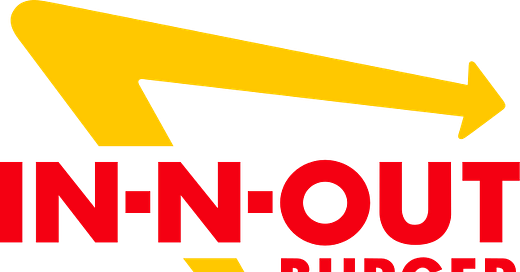







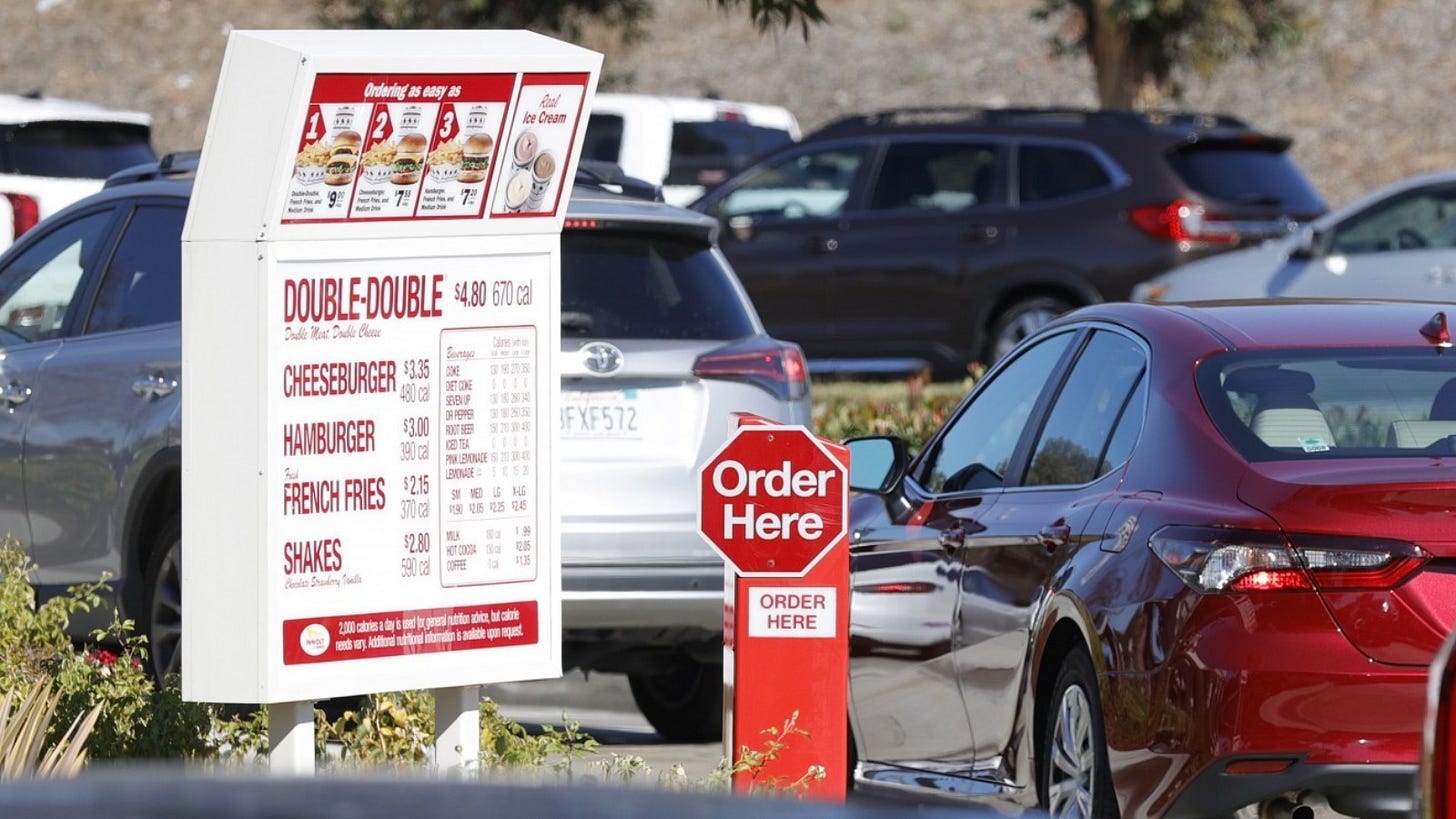


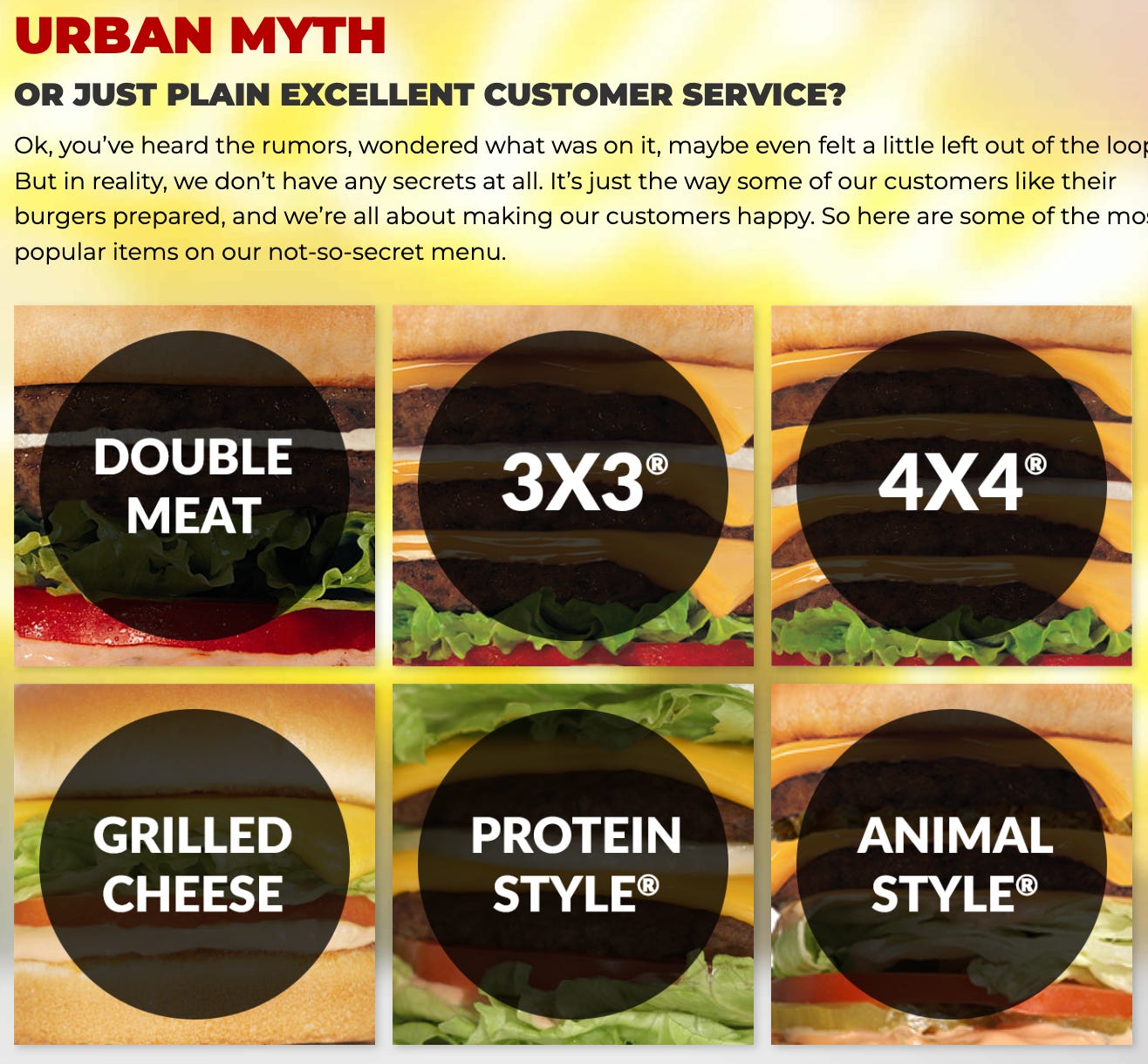

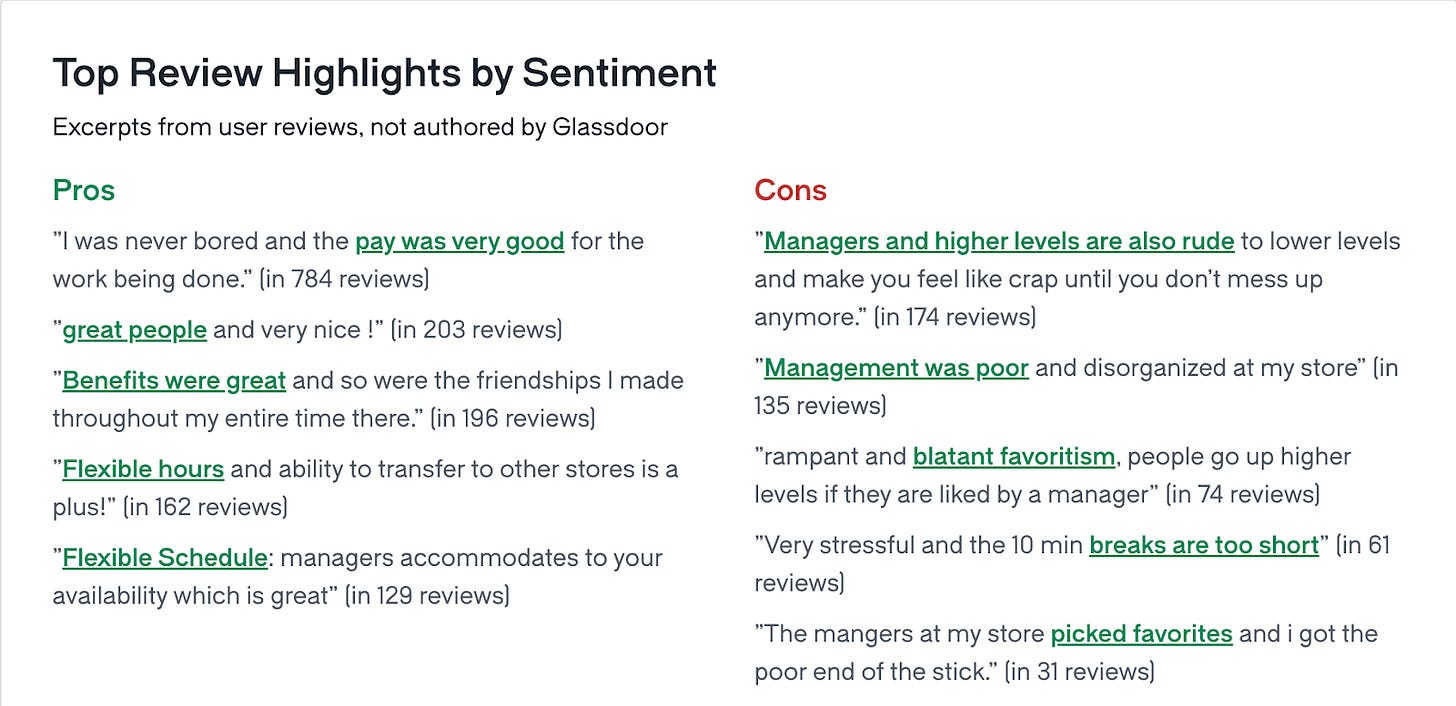
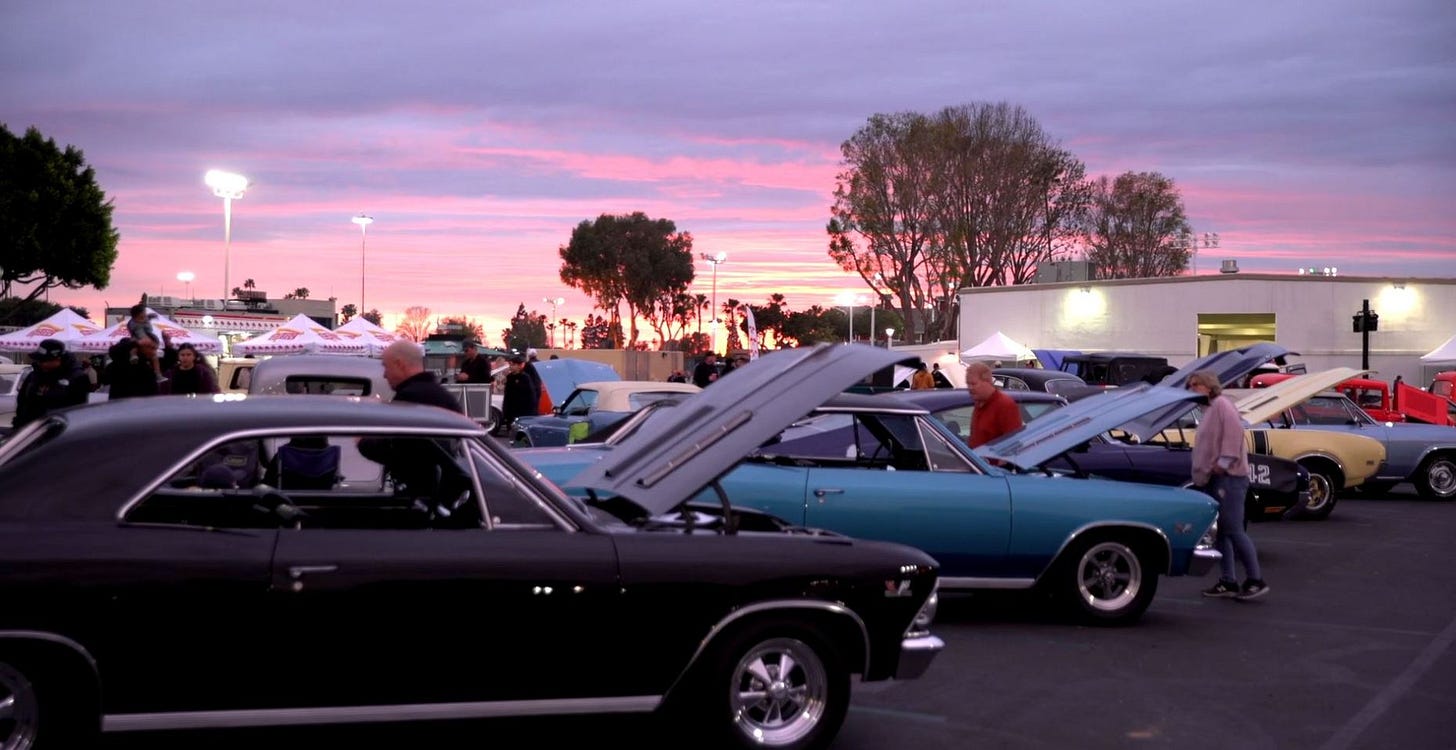

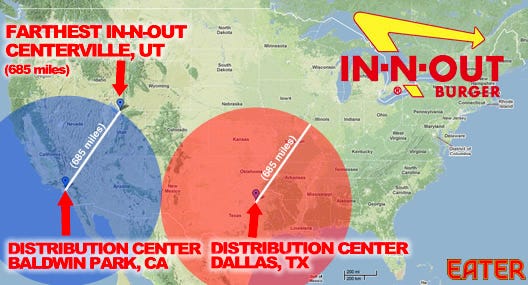






Loved the flow of this piece. Reminds me of how I felt listening to How I Built This episodes on my way to college. So inspiring. Thanks for the breakdown!